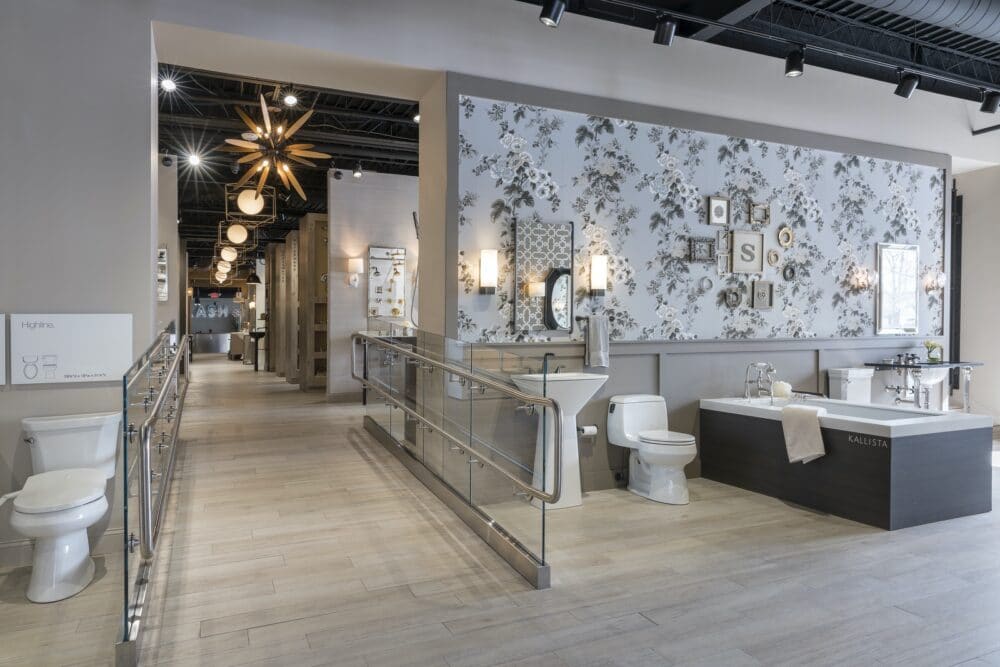The Arts and Crafts Movement was a reaction to the industrialization and production techniques of the late Victorian period. This movement sought to revitalize handcraftsmanship through a design of simple, organic forms. This trend of home design emerged in the late 19th century and continues to dominate residential architecture today. In particular, the Arts and Crafts Movement gave rise to a variety of house designs that redefined the way we live and have become iconic symbols of craft-conscious eco-friendly living. Arts and Crafts homes are characterized by their attention to craftsmanship and simple lines, as well as their incorporation of nature-inspired materials and elements. The objective of the Arts and Crafts movement was to create homes that embraced nature and regional features. This approach was a stark contrast to the mass-produced and industrialized buildings of the late Victorian period. These homes typically feature plain-faced asymmetrical exteriors made out of stone, wood, and brick. Characteristics such as large windows and wide porches are commonplace elements of these home designs, while English or American-style Arts and Crafts Movement homes often sport more muted hues like green, ochre and orange. Arts and Crafts Movement House Designs
Arts and Crafts architecture houses are rooted in the simple and organic designs of the period. These homes are casual and humble, relying on both a reliance on nature as well as ample craftsmanship. These homes are often two stories or more, with rooflines that are sloped, pitched, and stepped. These homes may also feature gabled or hipped roofs, as well as ornamental elements inspired by nature. Other external features commonly seen in these homes include projecting eaves, brackets, and wide overhanging porches. Inside, Arts and Crafts movement homes may feature built-ins, leaded glass windows, and abundant woodwork. Arts and Crafts Architecture Houses
Cottage architecture was another focus of the Arts and Crafts Movement. These cottages were typically small and rustic, with steep roofs and large windows that made them modest yet inviting. Rather than large and sprawling homes, cottage designs were modest and practical, with extended eaves and steeply pitched roofs. Cottage designs were rooted in the principles of the Arts and Crafts Movement, which sought to harmonize with nature and regional tradition. The Arts and Crafts Movement embraced cottage architecture as a way to create a more humanistic, distinct and personal approach to housing. Cottage Architecture of the Arts and Crafts Movement
One of the defining characteristics of Arts and Crafts Movement house designs is their incorporation of nature-inspired materials and elements. Wood, stone, and brick are all popular materials used in Arts and Crafts homes, while wide porches and windows offer an abundance of natural light and air circulation. Arts and Crafts homes also feature humbler, less ornamental details. Fireplaces, built-in bookcases, wood ceilings and decorative tilework are all common elements seen in Arts and Crafts houses. These designs prioritize function over form, often blending practicality with homey elements.Characteristics of Arts and Crafts House Design
Historic Arts and Crafts house plans draw inspiration from several architectural styles such as the Craftsman, Bungalow and English Tudor. The main focus of these designs was to strike a balance between form and function. Self-reliance and renewed connections with nature were also key elements of the movement. Historic Arts and Crafts house plans feature elements such as low-pitched roofs, overhanging eaves and wide porches. These house plans were designed to be comfortable yet functional, while featuring a unique blend of wood, stone, and brick to reflect nature-inspired elements. For example, Bungalows often featured brick chimneys and cedar shingles, while Tudor-style house plans incorporated stucco and half-timber details. Historic Arts and Crafts House Plans
There are many features of Arts and Crafts house designs. One of the core elements of these homes is their attention to handcraftsmanship. The Arts and Crafts movement sought to breathe new life into manual labor and skilled crafts, which is why such elements are commonplace in Arts and Crafts homes. These homes are also characterized by their plain-faced exteriors and incorporation of nature-inspired elements like large windows, overhanging eaves, and wide porches. The houses may also feature ornamental details such as brackets and carved woodwork. The muted hues of traditional Arts and Crafts homes often reflect earthy, muted tones such as green, ochre, or orange. Features of Arts and Crafts House Designs
English Arts and Crafts house plans typically feature distributed and symmetrical exteriors with gable-end facades. Inside, these houses often feature stuccoed walls and wood, brick, and stone detailing. While the most common English Arts and Crafts home designs are characterized by European-influenced pitched roofs and casement windows, some may also embrace the Arts and Crafts Movement’s affinity for regional styles. The English Arts and Crafts Movement was heavily influenced by William Morris and Art Nouveau. As a result, these house plans often feature elaborate floral details to reflect the movement’s attention to handcraftsmanship. Furthermore, some homes may feature Morris-inspired wallpaper and stained glass to reflect his affinity for bold, vivid colors. English Arts and Crafts House Plans
The Arts and Crafts Movement had a strong influence on the bungalow-style house plans of the early 20th century. Arts and Crafts Bungalows reflect the movement’s focus on simple, comfortable designs with minimal ornamentation. These homes often feature wood, stone, and brick elements with more muted tones such as green, ochre, or orange on the exteriors. These bungalows are typically low-pitched, gabled structures with one-and-a-half stories of living space. Bunker-style porches, wide eaves, and other mission-inspired details are commonplace elements of Arts and Crafts styled bungalows. Inside, homes may also feature sloped ceilings, built-in furniture, and leaded glass windows. Arts and Crafts Style Bungalows
American Arts and Crafts Movement house plans were heavily influenced by the Arts and Crafts Movement, as well as the American aesthetic of simplicity and comfort. These houses were designed to highlight craftsmanship, harmony with nature, and function over form. The most common American Arts and Crafts Movement house plans are characterized by wide porches, large windows, and wood shingles or shakes. These homes may also feature low-pitched roofs, gabled facades, as well as exposed beams and rafters. American Arts and Crafts-style houses are designed to provide comfort and convenience while also drawing inspiration from regional styles. American Arts and Crafts Movement House Plans
The Arts and Crafts House Revival style emerged in the mid-20th century, drawing inspiration from the simple lines and natural elements of the original Arts and Crafts Movement. These homes typically feature one- and two-story low-pitched gable roofs with large dormers, and asymmetrical exteriors made out of wood, brick, or stone. Arts and Crafts House Revival style homes are often characterized by their large windows, wide porches, and decorative elements that combine the Arts and Crafts aesthetic with more contemporary designs. Inside these homes, one can find built-ins, decorative tilework, and wood accents that reflect a blend of modern function and classic craftsmanship. Arts and Crafts House Revival Style
Artistic Craftsmanship in House Design
 Rooted in aspects of nature and inspired by the social and industrial revolutions of the 19th century, the Arts and Crafts Movement was a style and ethos surroundinghand-crafted goods. Taking these elements, house design of the era exemplified a standard of care and attention to detail resulting in some of the most aesthetically pleasing and enduring homes of the era.
Rooted in aspects of nature and inspired by the social and industrial revolutions of the 19th century, the Arts and Crafts Movement was a style and ethos surroundinghand-crafted goods. Taking these elements, house design of the era exemplified a standard of care and attention to detail resulting in some of the most aesthetically pleasing and enduring homes of the era.
AIM of Arts and Crafts Movement House Design
 At its core, the Arts and Crafts Movement was about setting a new standard of craftsmanship and quality for homes. Craftsmen of the era developed techniques in producing projects that used sustainable and natural materials and merged the idea of functionality with aesthetic beauty. The aim of this movement was to create a living environment that not only encouraged but enhanced an individual’s lifestyle. The principles of the Arts and Crafts Movement were fundamental in creating homes that featured hand-crafted elements and objects made from locally available materials, along with details inspired by nature.
At its core, the Arts and Crafts Movement was about setting a new standard of craftsmanship and quality for homes. Craftsmen of the era developed techniques in producing projects that used sustainable and natural materials and merged the idea of functionality with aesthetic beauty. The aim of this movement was to create a living environment that not only encouraged but enhanced an individual’s lifestyle. The principles of the Arts and Crafts Movement were fundamental in creating homes that featured hand-crafted elements and objects made from locally available materials, along with details inspired by nature.
Features of Arts and Crafts Movement House Design
 Exteriors of Arts and Crafts Movement houses featured natural hues, earthy tones, and thick, thumb-patterned mortar lines. Interior design elements included built-in cabinetry, fireplaces made from locally sourced stones, large windows for plentiful natural light, and intricate wooden staircase railings that spanned multiple stories. The use of handcrafted textiles, furniture and more added a unique touch to each home, making it reflect the personality of its inhabitants.
Exteriors of Arts and Crafts Movement houses featured natural hues, earthy tones, and thick, thumb-patterned mortar lines. Interior design elements included built-in cabinetry, fireplaces made from locally sourced stones, large windows for plentiful natural light, and intricate wooden staircase railings that spanned multiple stories. The use of handcrafted textiles, furniture and more added a unique touch to each home, making it reflect the personality of its inhabitants.
The Rise of Styles Incorporated into Arts and Crafts Movement House Design
 During the era, homeowners appreciated and adopted styles from Spanish, Mission, Tudor, and Craftsman to name a few. Inspiration was drawn from multiple regions and styles, while relying on the ethos of Arts and Crafts Movement to manage the detail areas of the house’s construction. Despite variations, Arts and Crafts Movement houses all boasted a certain timelessness, owing mostly to the craftsmanship of the era’s builders and artisans.
During the era, homeowners appreciated and adopted styles from Spanish, Mission, Tudor, and Craftsman to name a few. Inspiration was drawn from multiple regions and styles, while relying on the ethos of Arts and Crafts Movement to manage the detail areas of the house’s construction. Despite variations, Arts and Crafts Movement houses all boasted a certain timelessness, owing mostly to the craftsmanship of the era’s builders and artisans.
Modern Relevance of Arts and Crafts Movement House Design
 While styles and trends have changed since the heyday of Arts and Crafts House design, the impact of this movement remains omnipresent to this day. Highly sought-after,
Arts and Crafts Movement
houses feature a sense of timeless beauty and have the ability to stand the test of time, engaging modern viewers with the endless charm that these homes provide. Whether it’s the array of textures, natural materials, or high-quality details, these homes bring a sense of comfort and beauty to the eye of the beholder.
While styles and trends have changed since the heyday of Arts and Crafts House design, the impact of this movement remains omnipresent to this day. Highly sought-after,
Arts and Crafts Movement
houses feature a sense of timeless beauty and have the ability to stand the test of time, engaging modern viewers with the endless charm that these homes provide. Whether it’s the array of textures, natural materials, or high-quality details, these homes bring a sense of comfort and beauty to the eye of the beholder.







































































